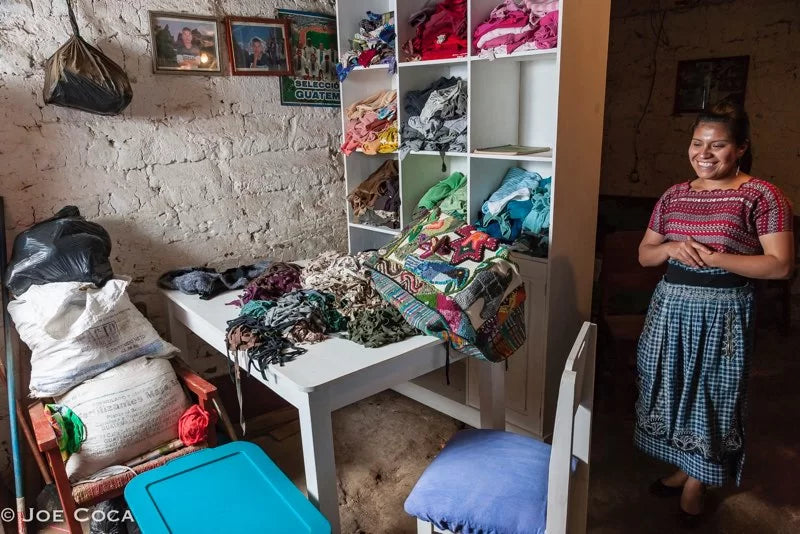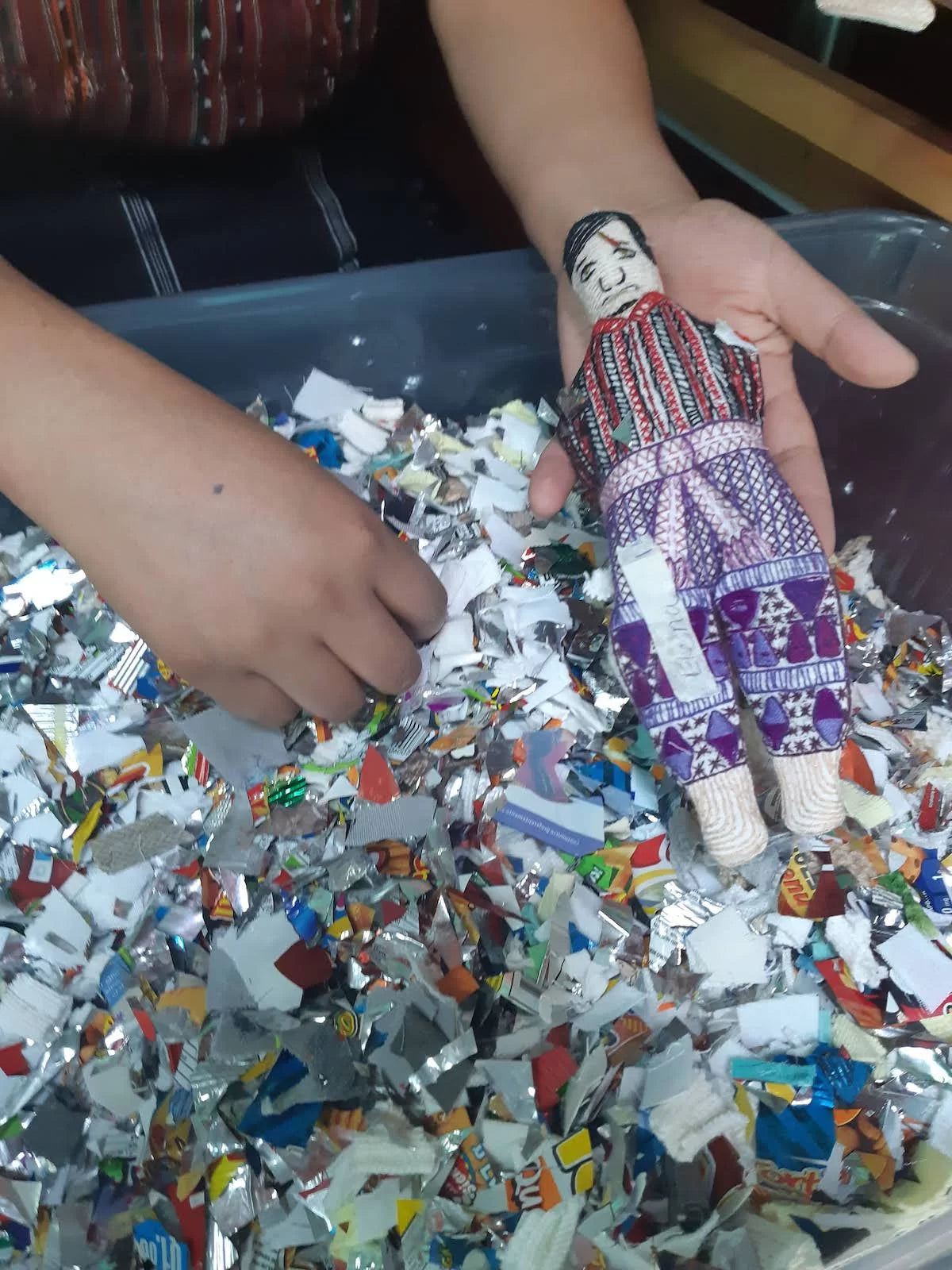
Recycling
5,931 second hand garments recycled and repurposed into hooked rugs
150+ Pounds of plastic bags diverted from landfills, collected by artists to use as stuffing for dolls and ornaments

Responsible Sourcing and Innovation
Established new partnership with Flor Ixcaco Cooperative to source naturally dyed cloth for embroidery artists to use in appliqué
Woodcarver Salvador Sojuel Tzina sourced local, sustainably forested wood varieties for use in footstools, doll stands, frames, and tools
-
Rug Hooking Materials
Hooked artwork is made from strips of fabric cut from recycled secondhand clothing, known as paca because of the way clothing is shipped, in bales. Artists purchase paca at small shops and markets in their communities, then wash each garment before cutting it into strips. The artists are experts at selecting fabrics and color combinations, using primarily cotton jersey garments like t-shirts.
-
A single rug contains fabric from 30-50 recycled garments
-

-
Embroidery Materials
The embroidery artists use fine cotton thread on cotton base cloth to stitch their designs. They source recycled fabric from secondhand clothes to add layers of fabric appliqué. To create a rich array of skin tones, artists use fabric colored with natural dyes from our partner Flor Ixcaco, a women’s cooperative in San Juan la Laguna.
Inside stuffed dolls and ornaments, you’ll find a mix of shredded plastic snack bags and fabric and thread scraps. Artists collect the snack bags in their communities, clean them, and cut them into small pieces to be used as filling– therefore diverting waste that would otherwise end up in landfills.


